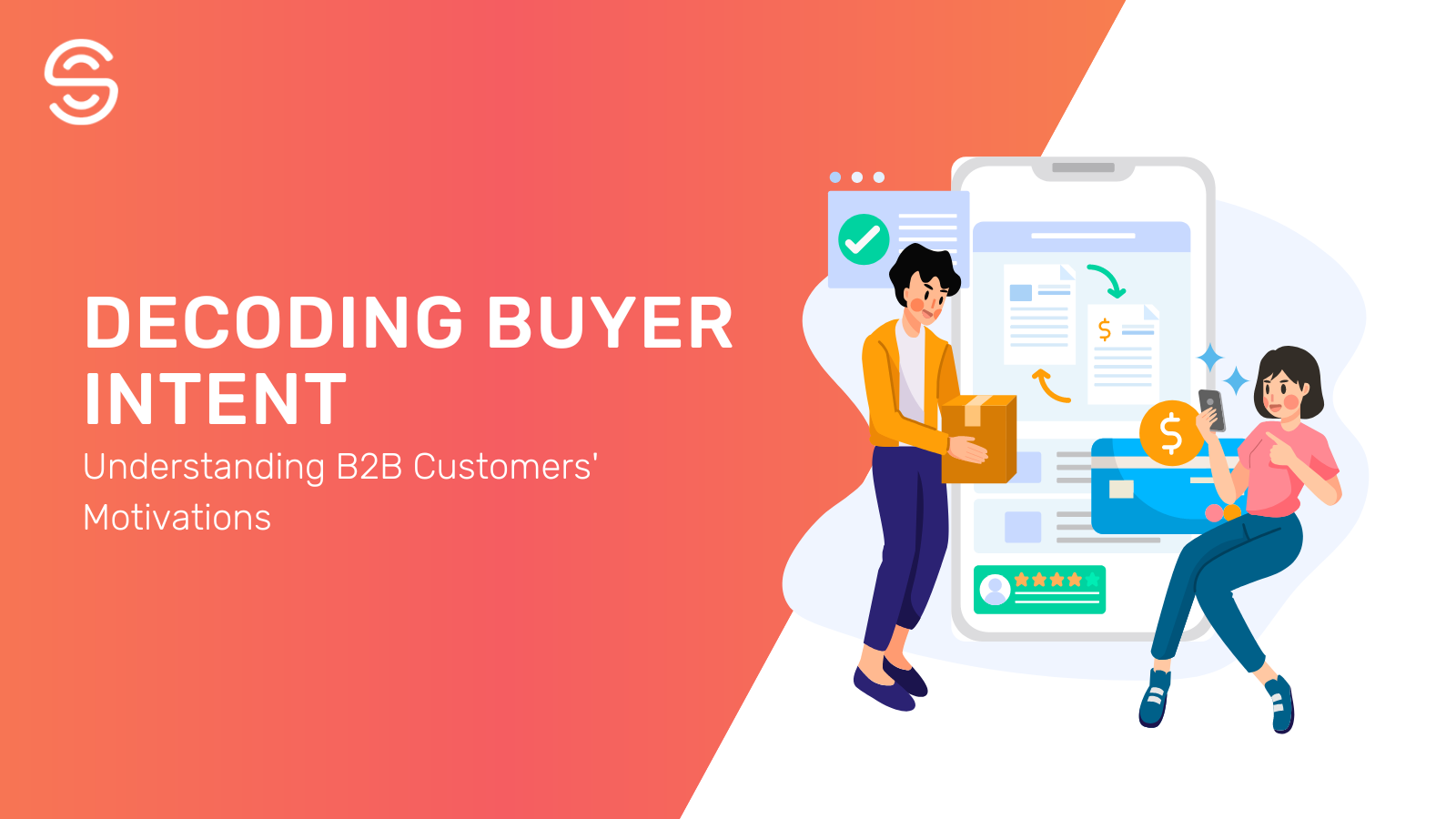- What is Intent Data?
- Understanding Explicit and Implicit Buyer Intent
- Unveiling the Power of Buyer Intent Data
- Types of Buyer Intent Data and How to Track It
- Market Research and Customer Surveys
- Web Analytics and Behavioral Data
- Transaction and Purchase Data
- Social Media and Digital Activity
- Customer Communications
- Data from the Sales and Customer Support Departments
- Utilizing Buyer Intent to Elevate B2B Customer Interactions
- Buyer Intent Data and Targeted Upselling and Cross-selling in B2B Sales
Decoding Buyer Intent: Understanding B2B Customers’ Motivations
July 20, 2023 7 min. read

Contents:
Try AI-Driven Insights
Monitoring for Free
Discover new business ideas and growth opportunities using
our AI-powered insights monitoring tool
In the fast-paced world of B2B marketing, understanding buyer intent is key to attracting and keeping valuable customers. It’s a crucial factor that can make or break B2B companies’ success, affecting their sales strategies, customer retention, and revenue growth. In this blog post, we’ll explore the importance of comprehending and analyzing buyer intent, and how using this information can boost success in the B2B sphere.
What is Intent Data?
Buyer intent refers to a potential client’s fundamental motivation or desire to buy a product or service from a B2B company. It plays a crucial role in the decision-making process, making it essential to grasp crafting impactful marketing strategies that truly connect with the target audience. So, what is buyer intent exactly, and how does it influence B2B buyers’ decisions?
Understanding Explicit and Implicit Buyer Intent
Buyer intent can take two forms: explicit or implicit. Explicit buyer intent occurs when a potential client openly expresses their desire to purchase a specific product or service. On the other hand, implicit buyer intent is more subtle, hidden in behavioral cues and responses to offers.
In the context of B2B buyers intent, decoding both explicit and implicit signals is vital. This enables businesses to customize their marketing messages and sales approaches, effectively meeting potential clients’ distinct needs and preferences.
Unveiling the Power of Buyer Intent Data
Analyzing buyer intent data has become a strategic imperative for B2B companies. This valuable data offers insights into the thinking of potential clients, allowing businesses to truly comprehend the factors influencing their decisions. Furthermore, it provides critical information for accurately forecasting demand.
To harness the power of B2B intent data, businesses can take advantage of modern analytics and artificial intelligence tools. These advanced technologies streamline data gathering, processing, and analysis, empowering data-driven decision-making.
Buyers intention marketing centers around utilizing buyer intent insights to craft targeted and relevant marketing campaigns. By comprehending how to use intent data, B2B companies can personalize their messages and offerings, optimizing the customer journey for enhanced engagement and success.
Types of Buyer Intent Data and How to Track It
Buyer intent data comes in various forms, like website interactions, content engagement, search behavior, and social media signals. B2B companies can effectively track and use this data with intent data tracking systems and advanced analytics platforms. Here are key data sources for collecting and interpreting buyer intent in the B2B context:
Market Research and Customer Surveys
Systematic market research and customer surveys reveal valuable information about customers’ preferences, opinions, expectations, and needs. These insights are crucial in shaping sales and marketing strategies that resonate with the target audience.
Web Analytics and Behavioral Data
Examining data from the company’s website, including prospect tracking, provides essential insights into products or services that pique customers’ interest and capture their attention. Understanding their online behavior helps optimize the digital experience and drive conversions.
Transaction and Purchase Data
Analyzing data from previous customer purchases and transactions uncovers valuable behavioral patterns and preferences. This data also reveals potential opportunities for upselling and cross-selling, bolstering revenue streams.
Social Media and Digital Activity
Monitoring customer activity on social media and digital channels offers a window into their interests, opinions, and feedback. Leveraging this data enables businesses to tailor their offerings and communication strategies effectively.
Customer Communications
Interactions with customers through email, feedback, and chats provide rich insights into their needs and intentions. Listening to their queries and concerns helps B2B companies enhance customer experience and build lasting relationships.
Data from the Sales and Customer Support Departments
Sales and customer support staff possess invaluable frontline knowledge about customer pain points, preferences, and inquiries. Incorporating their insights into the data analysis process enriches the understanding of buyer intent.
Utilizing Buyer Intent to Elevate B2B Customer Interactions
Understanding buyers intent unlocks the potential for deeply personalized interactions in B2B relationships. By customizing their approach to individual customers, B2B companies can offer relevant information, products, or services that perfectly align with their needs and interests.
By categorizing customers according to their buyer intent, companies gain the ability to recognize clusters of customers with similar needs. Armed with this valuable insight, they can create personalized marketing campaigns and tailored communications, precisely catering to the distinct requirements of each customer segment.
Buyer Intent Data and Targeted Upselling and Cross-selling in B2B Sales
Analyzing intent data reveals hidden opportunities for targeted upselling and cross-selling in B2B sales. When a customer shows interest in a specific product, the company can capitalize on the moment by offering complementary components or services, enhancing the overall product experience.
By leveraging this data, B2B companies can present personalized offers based on customers’ preferences and behaviors. This tailored approach increases the likelihood of successful upselling and strengthens the bond between the company and its customers.
Buyer intent is a powerful catalyst for attracting and retaining B2B customers. When thoughtfully harnessed alongside AI platforms like Signum.AI, buyer intent data becomes a defining factor for companies striving to optimize sales performance and achieve long-term success in the fiercely competitive B2B market.
